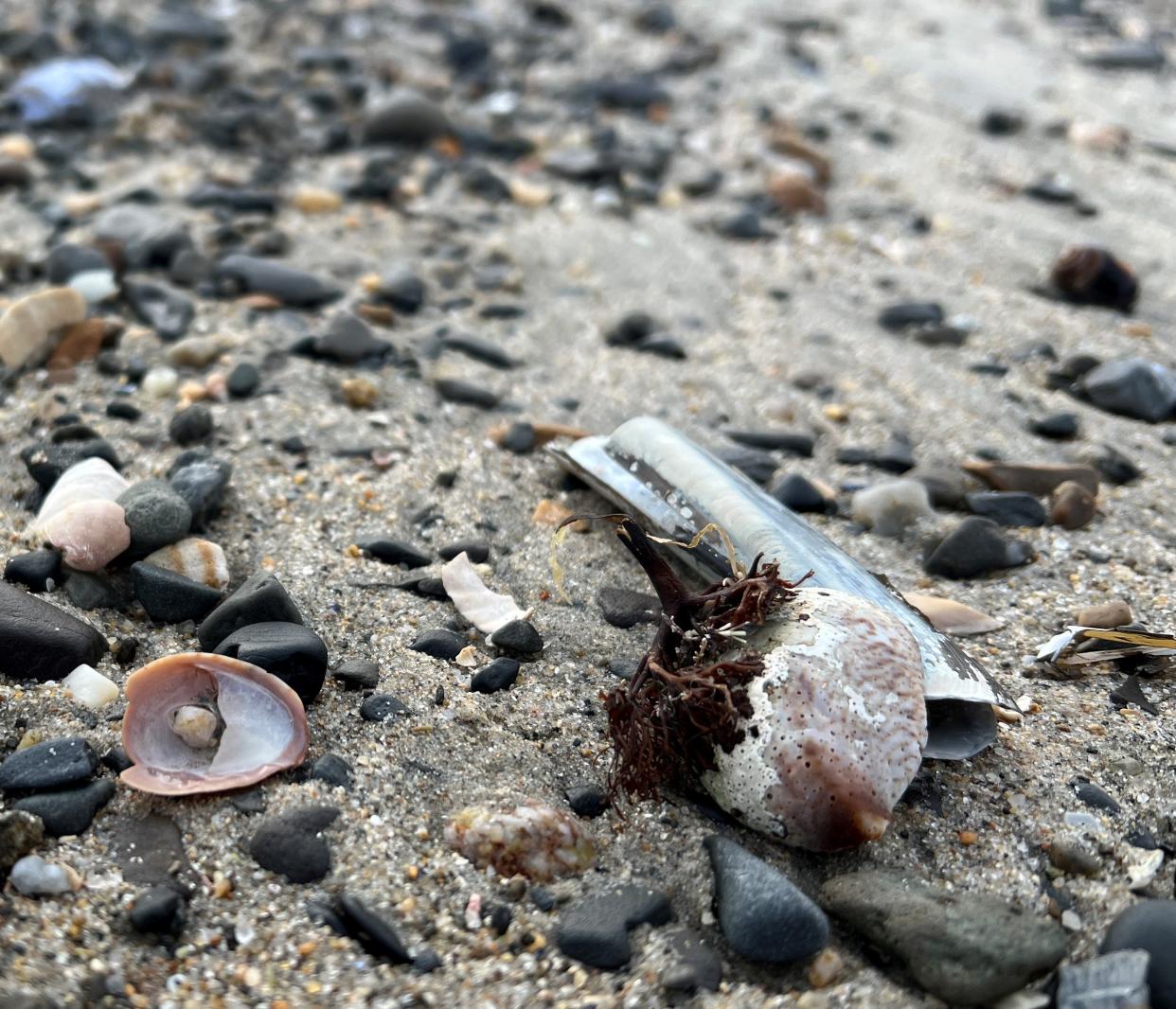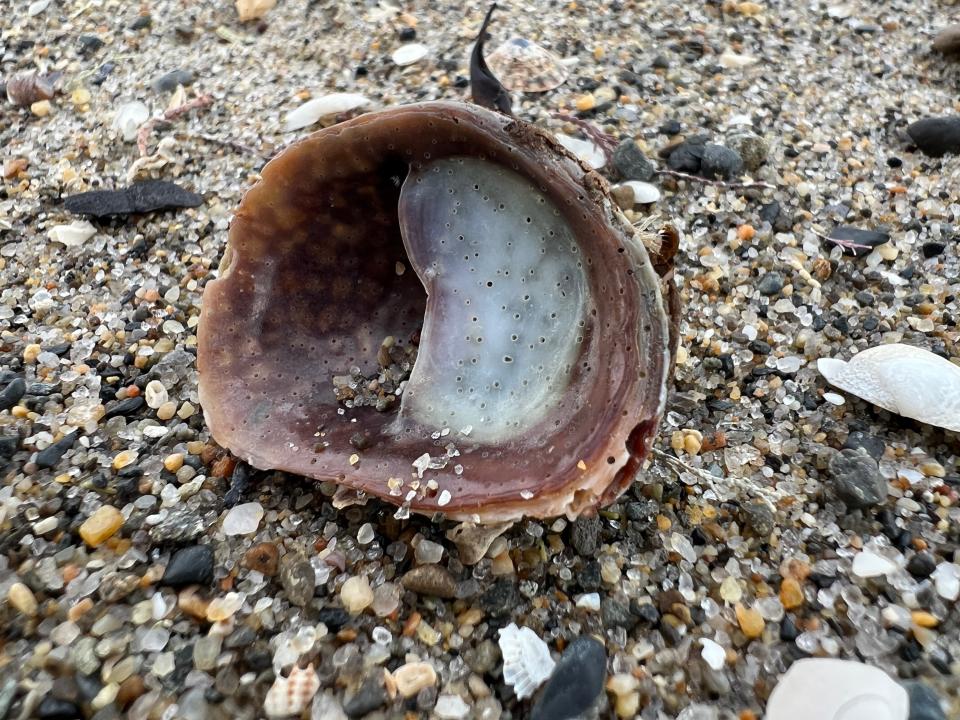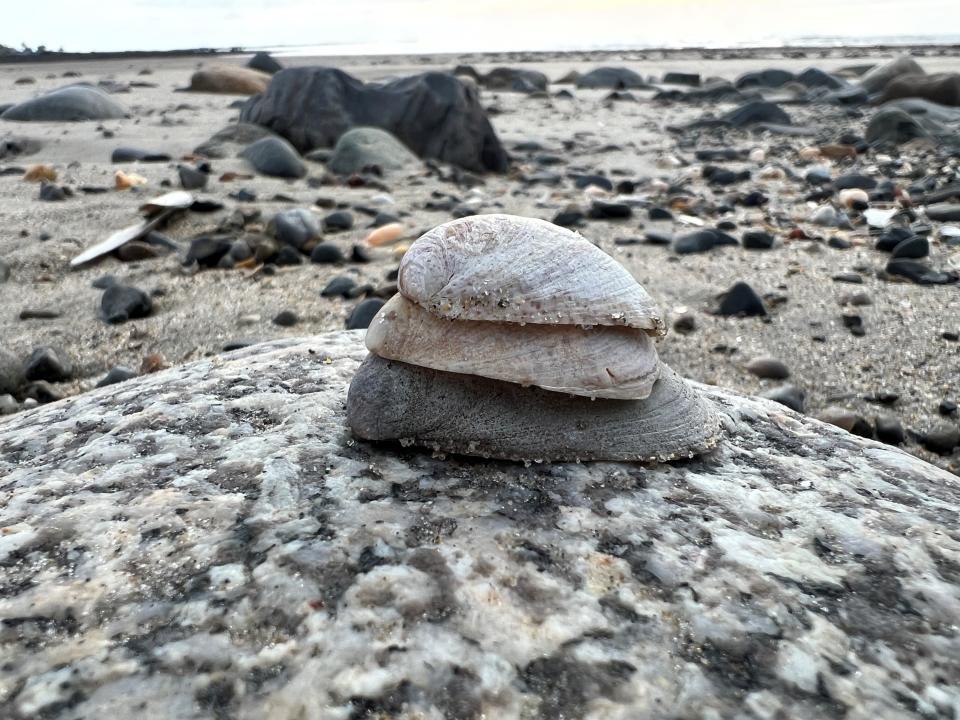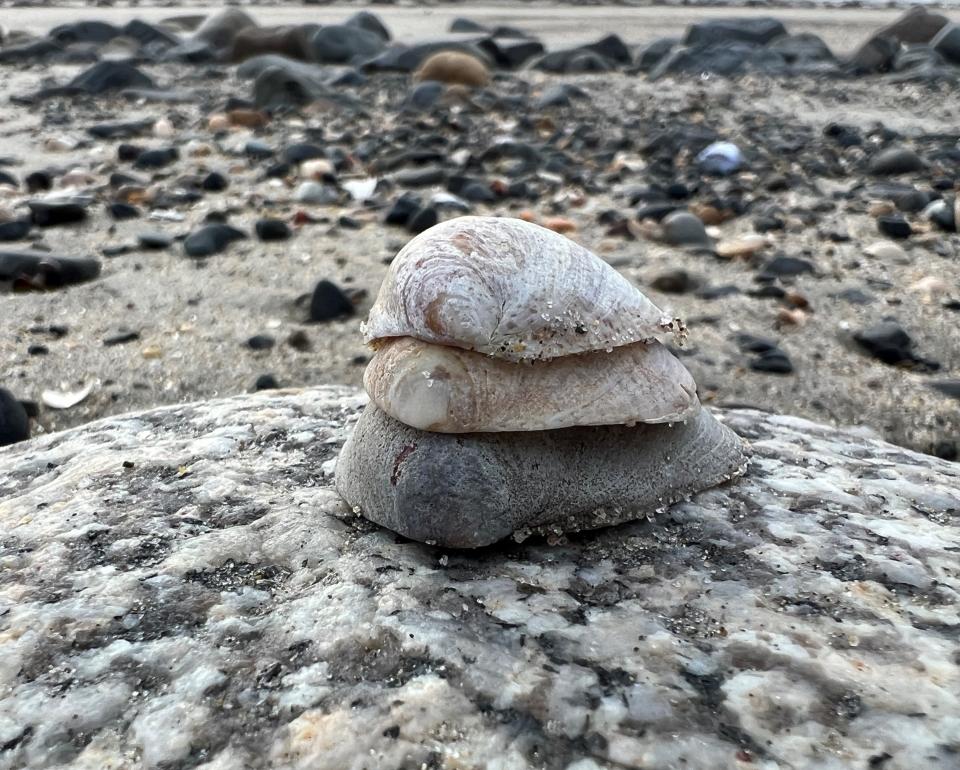The amazing sex lives of slipper limpets: Nature News

I recently received an email from a reader describing a shell he found washed up on a wintery beach, something he grew up calling a ‘half deck’ - as in, he clarified, a boat. He had included a photo and I immediately recognized his shell as what I grew up calling a "slipper shell."
I love common names, but they can be the problem, one species might have multiple common names and this can make identification confusing. As a non-boating type person I looked up the term “half deck”. According to Merriam Webster there are two definitions. The first definition: “...an incomplete deck. Specifically a portion of the deck of a sailing ship next below the spar deck between the mainmast and cabin.” The part about the incomplete deck made perfect sense to me and is an apt name for this common snail shell. When turned upside down these are boat shaped, with a little half deck in front. The second definition was “a slipper limpet of the genus Crepidula.” The name slipper shell equals half deck as a descriptor since these look like you could slide a tiny elf-foot into the opening underneath.

As Merriam Webster mentioned, slipper shells are related to limpets. Instead of the empty dome of a limpet’s shell, these snails have a shelf that covers half of the dome. This is the structure that makes them resemble a slipper or half deck. That shelf helps to support and protect their internal organs and is thought to be a remnant of that spiraled shell. If you look at them from the top or front you can see hints of that spiral.
More Nature News:Common Eiders dine on a winter caviar treat
Unlike regular limpets, slipper limpets are sedentary. Once the planktonic larvae settle on a suitable spot in the intertidal, the young slipper shell remains there, sculpting its shell to match the surface of the rock so that it can suction cup itself in place (a good reason to not pry these snails off of rocks — they won’t be able to reattach). Since they can’t move around to hunt or graze like other snails, slipper shells filter feed. Like a clam or mussel, they pull water into their mantle cavity (inside the shell) and any plankton in the water stick to the gills and are transferred to its mouth.

One of my favorite things about slipper limpets is their sex life. Their scientific name (Crepidula fornicata) is one of the first I learned in my freshman invertebrate zoology class because it is so memorable. Crepidula means "small boot" in Latin and fornicata is derived from the Latin word fornix, meaning ‘arch’. The arch refers to the Roman arches that supported the aqueducts under which brothels were notoriously located - giving rise to the word fornication. Arch makes sense for slipper limpets since the shell resembles a rounded or arch-soled boot, but these snails are also known for their incredible sex lives.
Slipper limpets begin life as male, switching gender as they mature. So, when the planktonic (floating) larva settles down on a substrate, it is male. If it is the only slipper shell around, it will develop into a female and send out chemical signals to attract other slipper shells to come settle on her, forming a stack of slipper shells with the oldest female on the bottom and younger males on top of it. Think about this. The males are able to directly fertilize the female beneath, even if separated by four or five other males! Adult slipper limpets can live in stacks of up to 20 individuals. I tried to make a stack of slipper limpet shells that I found on the beach. I only got as high as three or four shells because they didn’t conform to each other's shells as they would in real life.

As multiple male slipper limpets settle on that original female and begin to stack up they start competing with each other for mating with the female. The older, larger males father more offspring than the smaller, younger, further-away males. But, over time, something even more amazing can happen, the larger males can change gender and become female, perhaps to avoid trying to compete with all those other males.
Who would have thought that these little snails would have such complex goings on? This is just one more reason to visit the beach any time of year; you never know what interesting creatures with interesting stories will wash up.

Susan Pike, a researcher and an environmental sciences and biology teacher at Dover High School, welcomes your ideas for future column topics. Send your photos and observations to spike3116@gmail.com. Read more of her Nature News columns online at Seacoastonline.com and pikes-hikes.com, and follow her on Instagram @pikeshikes.
This article originally appeared on Portsmouth Herald: Slipper limpets at Parson's Beach in Kennebunk, Maine

